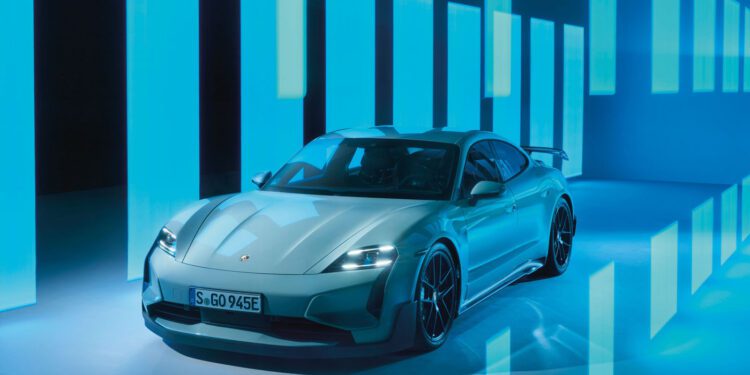Porsche pushed engineering boundaries for its pinnacle EV.
It’s been almost a year since the unveiling of the Porsche Taycan Turbo GT, which raised the bar for Porsche’s electric performance capabilities as not only the new performance pinnacle of Porsche’s Taycan lineup but also the most powerful production model that Porsche has ever made. As the ultimate iteration of the first Porsche electric vehicle, the Taycan Turbo GT arrived on the scene, breaking records on race tracks around the world thanks to its immense power and immaculate engineering.
However, creating a vehicle that is even more powerful and fast than the previous pinnacle Taycan, the Turbo S, is easier said than done. When it comes to combustion engines, increasing power is much more straightforward, as it can be achieved by increasing displacement, letting the engine rev higher, and lowering friction losses. Improving an electric vehicle that is already immensely powerful, like the Taycan Turbo S, on the other hand, is more complex.
Porsche had to use creative solutions to up the ante for the Taycan Turbo GT. The engineers started by improving the pulse inverter at the rear axle from a 600-ampere unit to a 900-ampere one, which required a modified body shell to accommodate its height. The two-speed transmission was also improved to better handle the increased torque, and with a longer ratio, a higher top speed was also achieved.
To improve aerodynamics, new spoilers were added, and the underbody was modified. Performance was also enhanced with lightweight ceramic brakes, special tires and wheels, and the iconic Weissach Package, which adds extra racing-readiness to many celebrated Porsche models. Derived from Formula E, extra power is achieved through Attack Mode, which transforms the vehicle’s performance for two seconds. With the electric future on the horizon for the automotive industry, the Porsche Taycan Turbo GT is a perfect example of how to achieve pinnacle battery-powered performance.
Image Source: Porsche













